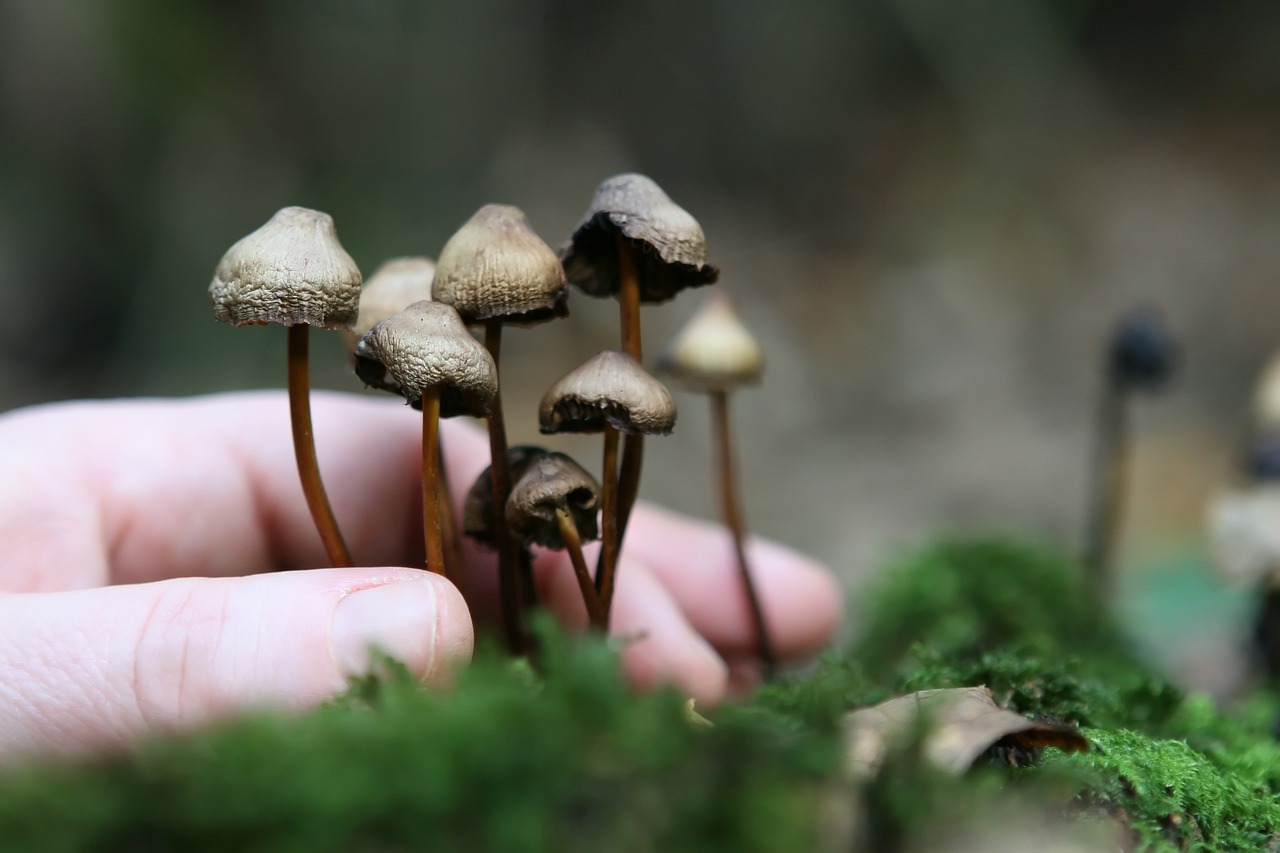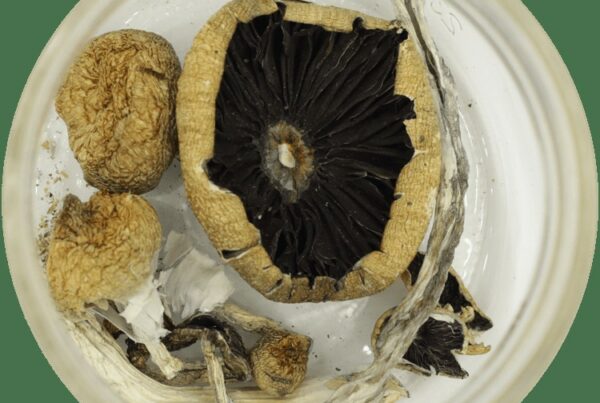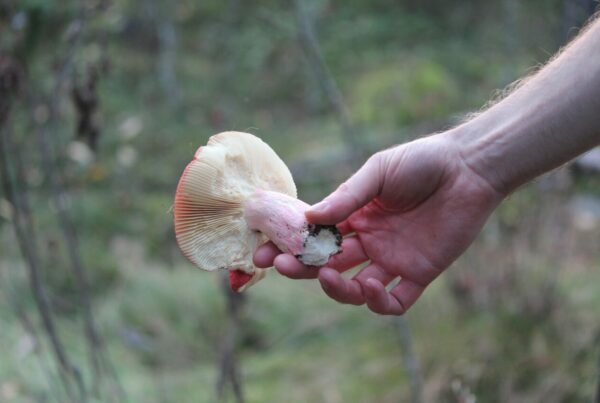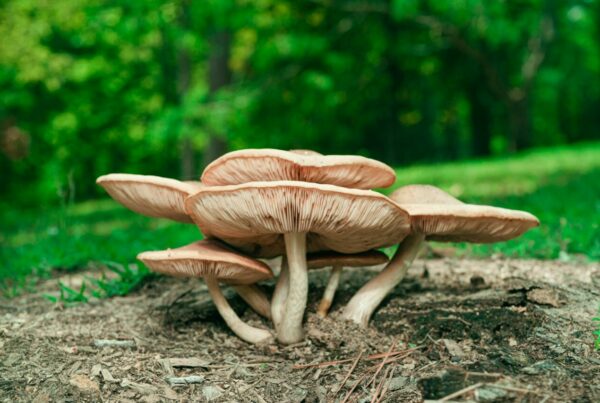Demystifying Mycelium
Mycelium, the root structure of fungi, essentially acts as the digestive system for mushrooms. It scours for nutrients, converts them into absorbable forms for the fungus, thereby nourishing it. As a byproduct, it enriches the neighboring soil, creating a nutrient-rich biomass that serves as an excellent mulch for gardening, while also providing essential nutrients for other plants.
Beyond their function in mushroom development, mycelium networks also play a crucial role in the health and growth of many ground-based plants, including trees. For example, tree roots and fungi engage in a symbiotic exchange: the tree offers the fungus carbon in the form of sugars, and in turn, the fungus provides the tree with vital minerals like nitrogen and phosphorus. Learn more about this symbiotic relationship here.
Fascinatingly, mycelium networks operate as a kind of subterranean communication network among plants, much like the neural networks in our brains. Recent scientific studies suggest that plants and trees might have primitive nervous systems that fungi could potentially influence, impacting processes such as communication, memory, and learning. Moreover, mycelium enhances soil health by decomposing decaying organic matter and detoxifying any pollutants present.
If you’re keen on growing magic mushrooms, comprehending the growth of mycelium is crucial. While the cultivation process might pose challenges for beginners, understanding mycelium is an essential first step. While you could always buy mushrooms from Mushrooms Online Canada online, knowledge about mycelium can enrich your cultivation journey.
Mycelium Growth Process
When fungal spores sense a growth-friendly environment, they kick-start the formation of two types of mycelium. The first kind, referred to as primary or monokaryotic mycelium, is defined by a single nucleus within each cell. Generally, this mycelium type is invisible to the naked eye. The second variety, known as secondary or dikaryotic mycelium, is visible and houses two nuclei in each cell.
The process of germination sparks life in fungal spores, leading to the formation of the initial or primary mycelium, known as monokaryotic mycelium. When this monokaryotic mycelium encounters another compatible one, they merge to form the second phase known as dikaryotic mycelium. It’s this secondary mycelium that holds the ability to produce mushrooms or sclerotia.
The Different Types of Mycelia
Mycelia exhibit diversity and can be categorized into three types, with two of them being signals of successful cultivation.
- Rhizomorphic mycelia are recognizable by their string-like extensions. Composed of units called hyphae, these mycelia form a network of grouped hyphae known as rhizomorphs. Rhizomorphic mycelia extend first, then send chemical signals back to the colony, indicating a suitable area for nutrient distribution. The rest of the mycelia then follow suit. The hyphae at the leading edge of the rhizomorphic mycelia releases peroxidase, an enzyme that breaks down the material ahead for nourishment. The hyphae then spread over this material, distributing the nutrients throughout the colony. Rhizomorphic mycelia are favored by many cultivators due to their propensity to sprout mushrooms from the substrate.
- Tomentose or “Fluffy” mycelia, while similar to Rhizomorphic mycelia, have a distinctive arrangement of strands. Although these strands might not be immediately visible, they exist and are clustered together, giving a cotton-ball-like appearance. Whether the mycelia exhibit tomentose or rhizomorphic characteristics largely depends on the growing environment. The effect of the type of mycelia on the growth rate and harvest yield is a topic of ongoing debate among cultivators.
- Aerial mycelia come into play when the growing conditions are less than ideal. In such conditions, the mycelia tend to grow outward instead of spreading across the medium or forming a clump. This type of mycelia, often mistaken for bacterial infection, can interfere with mushroom cultivation, leading to smaller, weaker mushrooms. Aerial mycelia are typically the result of inadequate fresh air exchange and excessive humidity.
Is it Mould or Mycelium?
Discerning between mould and mycelium is essential. If you notice green, blue, grey, or black patches on or within your fruiting box, it’s likely that your culture is contaminated. Discolouration is the primary sign. However, blue spots could simply be indicative of bruising.
Cobweb moulds are typically easy to spot. Instead of the bright The Mycelium is predominantly white but often presents with a greyish tint and is characterized by a fibrous, fluffy texture. Although cobweb and green moulds do not pose a threat to human health, they can have adverse effects on the well-being of mushrooms.
Mushrooms Online Canada: Your Premier Guide for Mushroom Intel
Whenever you ponder about psychedelic mushrooms in Canada, let Mushrooms Online Canada be your first thought. We persistently aim to offer substantial information that ensures a secure and pleasurable mushroom journey.





